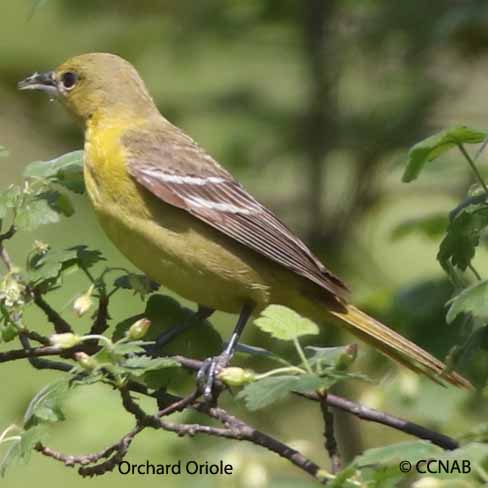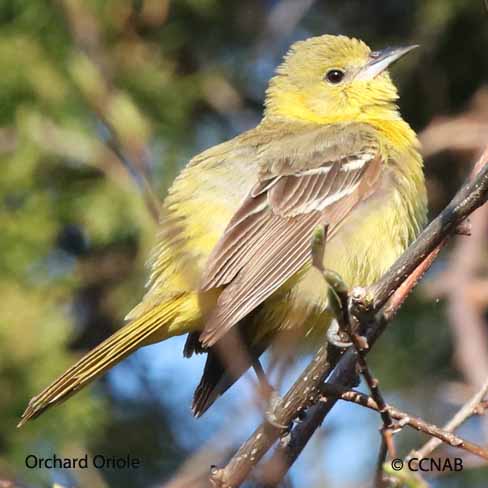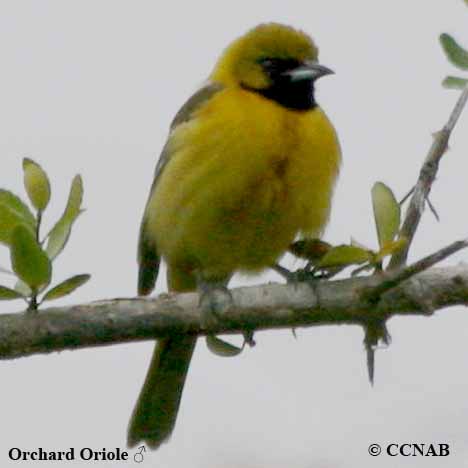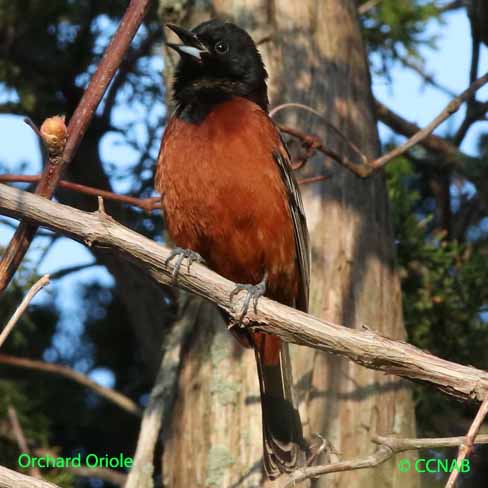North American Bird Search Box
This search box can be used to find bird species using bird's english, french or latin name, or to identify bird by its 4 letter Alpha Code
Field Guide for all the Birds of North America
Orchard Oriole
4 Letter (english names) Alpha Code: OROR (1)
Oriole des vergers
Icterus spurius
Information, images and range maps on over 1,000 birds of North America, including sub-species, vagrants, introduced birds and possibilities
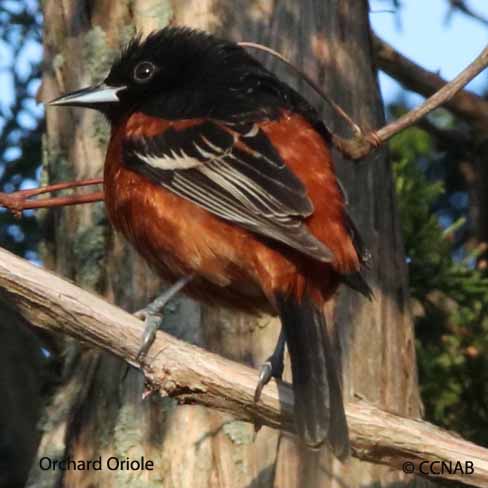
Species: The Orchard Oriole (Icterus spurius) is found throughout most of the southeastern regions of North America. It prefers habitat with open woods, parks, orchards and rural areas. It is familiar with people and dwellings and may be approached without alarming the bird.
Distinctions: Sexually dimorphic, the male has a black head, back, wings and tail feathers. Body and scapulars are burnt orange. Females and juveniles have greenish upper bodies with yellow underparts. Young males are very similar to the female's colours but will show a small darker bib in the throat region.
Voice: Sound resembling types of whistles, notes are not as fluent as other oriole species, lyrics fall into chattering notes.
Nesting: Four to five light grey or blue coloured eggs, with purple squiggles throughout. They build enclosed nests similar to other species of orioles, made from grass, plant fibres and man-made items such as string or cord. Nest is attached to a branch or a limb of a tree, where it hangs and is able to sway in the wind.
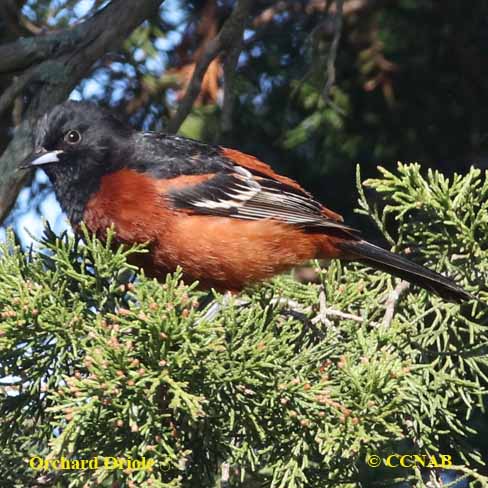
Life, Habitat & Pictures of North American Orioles
| B L | W W | W | Family | Latin Name |
|---|---|---|---|---|
| 7.25" 18.4cm | 9.5" 24.1cm | 0.7oz 19.8g | Icteridae | Icterus spurius |
North American Birds Videos
- Click here - Female
- Click here - Female
North American Birds Calls
- Click here
- Summer
- Year Around
- Winter
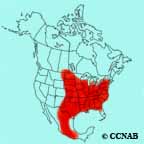
Distribution: Found throughout wooded areas, parks and orchards, seen from Maine through southern Ontario, into the northern US states, up into the southern parts of the prairie provinces as far as Saskatchewan, then down into New Mexico and across into southern Florida.
Reference to Other Bird Site:
ABA - American Birding Association This site represents an organization that maintains official records of all birds species that have been proven to have been seen inside the perimeters of the North American Continent and the surrounding bodies of water. Regular revised versions are posted to keep the bird list current at all times. This is the list used by all serious birders over their lifetime. You may be aware of the movie called the "Big Year". It was with this list that all the competing birders used in an attempt to set a new record as to how many bird species that could be seen by an individual birder in one calendar year.
